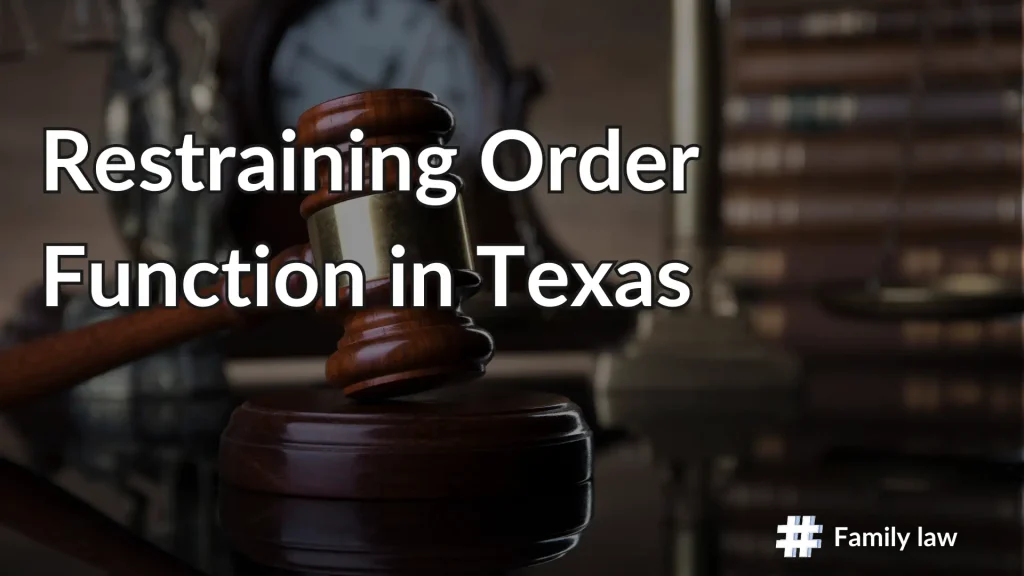Are you looking for a way to protect yourself from threats or harassment? In Texas, restraining orders can provide the safety you need. They prevent someone from taking specific actions or limit their proximity to you. How does a restraining order work? Whether you’re dealing with a contentious divorce, family issues, stalking, or another disturbing and threatening situation, knowing how to use restraining orders can help keep you and your family safe. An experienced The Woodlands domestic violence attorney can guide you through filing a restraining order.
What Are the Requirements for a Restraining Order?
To get a restraining order in Texas, you need to show that someone in your family or household has inflicted or made a threat of family violence. How does a restraining order work? Family violence includes physical harm, bodily injury, assault, or a threat that places a person in fear of imminent harm. You must provide evidence to support your claim, such as police reports, medical records, or witness statements.
Steps in Securing a Restraining Order
Here’s a closer look at the steps involved in getting a restraining order and how does a restraining order work:
- File an Application – Start by filing an Application for a Protective Order at your local courthouse. You must include details about the relationship between yourself and the person alleged to have committed family violence, as well as a description of the incidents of violence or threats.
- Temporary Ex Parte Order— If there’s an immediate danger, you can ask for a temporary ex parte order. A judge can grant this order without notifying the other person. It usually lasts up to 20 days; the court may extend it if needed.
- Serve the Respondent – You must officially notify the person you’re filing a restraining order against, known as the respondent, about the application and the court hearing. You must have a court official or police officer serve the notice to ensure the respondent knows about the case.
- Court Hearing – Once the respondent has been informed, the court will schedule a hearing at which you and the respondent can present evidence. The judge will listen to both sides and decide whether to issue a protective order. The court must find that family violence has occurred and that it is likely to happen again.
- Issuance of Protective Order – If the judge finds sufficient evidence of family violence, they will issue a protective order. This order can include various provisions to protect the applicant, such as prohibiting the respondent from contacting or coming near you, removing the respondent from your shared residence, and more.
- Duration and Enforcement – A protective order is usually valid for up to two years, but the court can extend it in certain circumstances. Violating a protective order can lead to criminal charges, including fines and jail time.
Can I File a Restraining Order Online?
Some prosecutors, including the Harris County District Attorney’s Office (which handles cases for most of the Houston metro area), put the forms to apply for a protective order online. However, you must submit a paper application for a protective order in person at your local courthouse.
You may worry about someone close to you finding out you’re asking for a protective order against them. Fortunately, Texas law includes some provisions to address these situations. You can often ask a judge for a temporary protective order against someone without them being present at the hearing. While the subject of the protective order must attend the hearing for a permanent protective order, a temporary order can protect you. For instance, if you live with an abusive partner and own or rent the home (either by yourself or jointly with your partner), a temporary order can force them to leave the premises.
Can You Get a Restraining Order for No Reason?
No, you can’t get a restraining order without a good reason. You have to show that someone you know has either inflicted or threatened to inflict family violence on you or your children. This requirement helps prevent situations where someone has their rights restricted through a restraining order without good cause.
Need Help Filing a Restraining Order in Texas? Contact BB Law Group PLLC Today
At BB Law Group PLLC, our The Woodlands domestic violence lawyers understand your desire to feel safe daily. We have extensive experience with restraining orders and can help you understand how a restraining order works, assist with the paperwork, attend court hearings, advocate for your rights, and assist you in enforcing a restraining order if someone violates it. Call us today at (832) 534-2589 or complete our contact form to get started with a confidential consultation.
Related Posts:
Myths, Misconceptions About Domestic Violence
Degrees of Separation Film Could Be Used As Training Tool For Domestic Violence Cases

